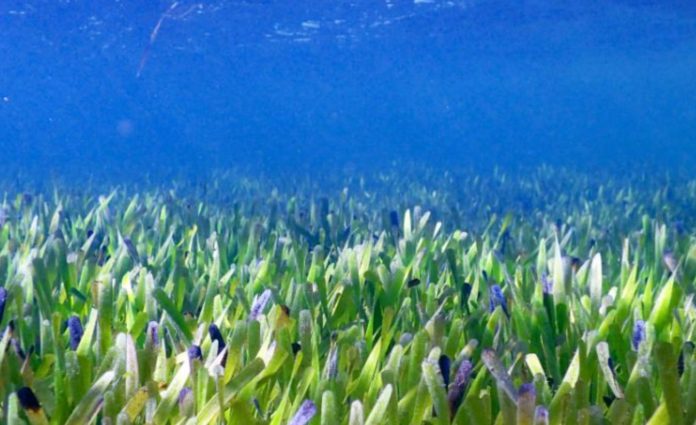The world’s largest plant, at least 4,500 years old, has been unearthed in Shark Bay, Western Australia.
Australian scientists have discovered what they claim to be the world’s largest plant, which they estimate to be at least 4,500 years old.
Researchers from The University of Western Australia and Flinders University discovered the 180-kilometer-long old and exceptionally hardy seagrass.
A recent study published in Proceedings of the Royal Society B describes the discovery of a solitary plant or ‘clone’ of the seagrass Posidonia australis in the shallow, sun-drenched seas of the World Heritage Area of Shark Bay in Western Australia.
Dr. Elizabeth Sinclair, an evolutionary biologist from the University of Western Australia’s School of Biological Sciences and Oceans Institute, is one of the study’s senior authors. In order to better understand how genetically diverse the seagrass meadows in Shark Bay were, and which plants should be collected for seagrass restoration, the project was launched in 2013.
Dr. Sinclair says “we often get asked how many different plants are growing in seagrass meadows and this time we used genetic tools to answer it.”
Jane Edgeloe, a student researcher at UWA and the study’s lead author, said that the team took samples of seagrass shoots from all of Shark Bay’s different environments and used 18,000 genetic markers to make a “fingerprint.”
“The answer blew us away,” adds Ms. Edgeloe, “there was just one!. That’s it, just one plant has expanded over 180km in Shark Bay, making it the largest known plant on earth.
“The existing 200km2 of ribbon weed meadows appear to have expanded from a single, colonising seedling.”
Dr. Martin Breed, an ecologist at Flinders University and a co-author of the paper, said the findings create a serious ecological conundrum.
“This single plant may in fact be sterile; it doesn’t have sex. How it’s survived and thrived for so long is really puzzling. Plants that don’t have sex tend to also have reduced genetic diversity, which they normally need when dealing with environmental change,” according to Dr. Breed.
“Our seagrass has seen its fair share of environmental change too. Even today, it experiences a huge range of average temperatures; from 17 to 30 °C. Salinities from normal seawater to double that. And from darkness to extreme high light conditions. These conditions would typically be highly stressful for plants. Yet, it appears to keep on going.
“How does it do it?” asks the narrator. “Well, we reckon its genes are very well-suited to its local, but variable, environment and it also has subtle genetic differences across its range that help it deal with the local conditions,” Dr. Breed adds.
Apart from its immense size, what distinguishes this seagrass plant from other giant seagrass clones, according to Dr. Sinclair, is that it contains twice as many chromosomes as its marine relatives, making it a polyploid.
As explained by Dr. Sinclair, “Whole genome duplication through polyploidy – doubling the number of chromosomes – occurs when diploid ‘parent’ plants hybridise. The new seedling contains 100 per cent of the genome from each parent, rather than sharing the usual 50 per cent.
“Polyploid plants often reside in places with extreme environmental conditions, are often sterile, but can continue to grow if left undisturbed, and this giant seagrass has done just that.”
“Even without successful flowering and seed production, it appears to be really resilient, experiencing a wide range of temperatures and salinities plus extreme high light conditions, which together would typically be highly stressful for most plants.”
The researchers have now put up a series of studies at Shark Bay to figure out how this plant survives and thrives in such a changing environment.
Image Credit: Getty
You were reading: 4,500-year-old, world’s largest plant found in Australia
